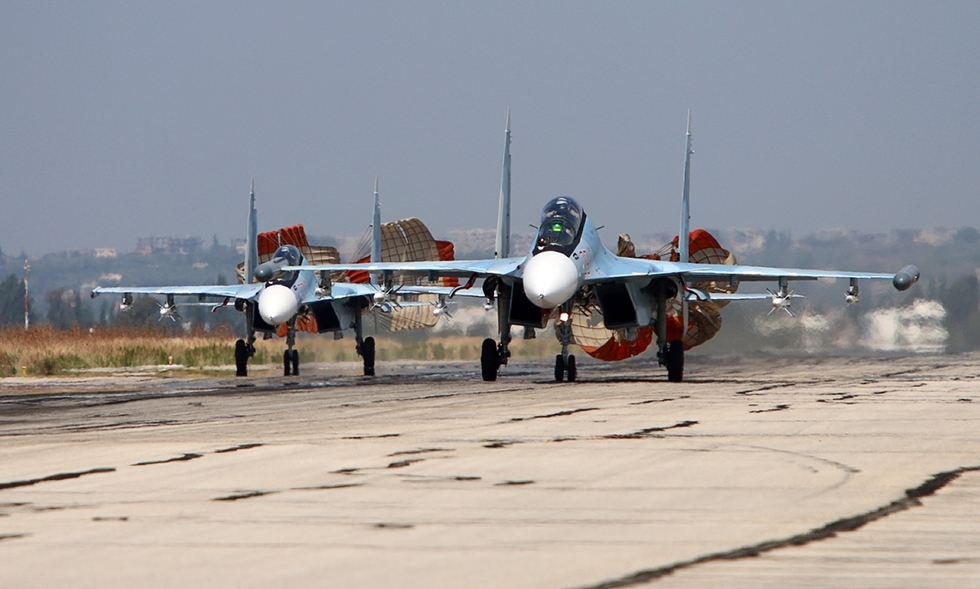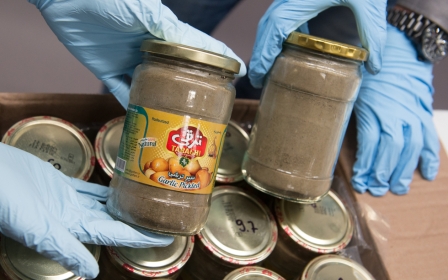Russian arms sales may prove costly to Tehran

The surprise visit of Russian Defence Minister Sergei Shoigu to Tehran late February comes on the heels of rapidly intensifying high-level defence contacts between the two states.
Even before this latest visit there was a flurry of speculation on impending Russian arms sales to Iran, in part touched off by Iranian Defence Minister Hossein Dehghan’s visit to Moscow barely four days before Shoigu’s visit to Tehran.
Latest reports on Russia finally shipping the S-300 air defence system to Iran appear to lend credence to reports centred on substantial new arms sales, in particular the sale of Sukhoi Su-30 fighters.
If reports on the sale of Sukhoi Su-30 fighter jets turn out to be accurate, this would qualify as Iran’s most important defence-related acquisition since the 1979 revolution.
In conjunction with the sale of the S-300, and potentially the more advanced S-400 air defence systems, the acquisition by Iran of the most advanced Russian multi-role jet fighters has the potential to change the balance of power in the region. It is not in the least surprising therefore that Washington is strongly opposed to this sale.
Customary Western opposition notwithstanding, the real issue is whether these acquisitions are truly in the Iranian national interest and to what extent (if any) they undermine the cohesion and integrity of the Iranian air force.
A decrepit air force
By any standard Iran has one of the weakest air forces in the region. Compared to the big neighbouring states, specifically Pakistan, Saudi Arabia, Turkey and Israel, Iran has by far the least advanced air force.
Even the small Gulf states of the United Arab Emirates and Bahrain have more advanced fighter jets and can potentially inflict painful blows on Iran in the air.
Entirely American in origin, Iran’s air force has struggled with severe maintenance and upgrade issues for the past four decades. The Iran-Iraq War of the 1980s destroyed much of the air force, and robust American-led sanctions disrupted Iran’s ability to replenish its fleet of fighters and bombers.
Even now the bulk of the Iranian air force is made up of the F-4s, F-5s and F-14s supplied by the United States more than 40 years ago. The mainstay of the air force continues to be the McDonnell Douglas F4 Phantom II, of which only 30 may be operational.
Whilst Iranian air force technicians and engineers have exerted heroic efforts in maintaining, and where possible upgrading the residual fleet of American-supplied jet fighters and bombers, a consensus has formed that these obsolete jets will have to be phased out within a decade.
This realisation is reinforced by regular crashes involving the F-4 Phantom, with the latest crash occurring in January with the loss of the pilot’s and navigator’s lives.
Iran has had modest success in diversifying its air force following the end of the Iran-Iraq War in August 1988. A small fleet of MiG-29 fighters and Sukhoi Su-24 bombers were purchased from the former Soviet Union in 1989. There was also a small acquisition from China in the form of the F-7, which is modelled on the MiG-21.
Additionally Iran confiscated several Russian and French made bombers and fighters from Iraq – by way of war reparations - during the Kuwait War of 1991.
Furthermore, Iran has tried to develop an indigenous jet fighter capability but without tangible success. The Saeqeh fighter, which is effectively a cannibalised version of the Northrop F-5, became operational in September 2006 with reports suggesting the air force deploys at least one squadron of these fighters.
Triumphalist fanfare notwithstanding, the fact remains that the Saeqeh’s capabilities have not been independently tested and verified. In tandem with other indigenous capability in the aerospace sphere, the Saeqeh appears to be more for show than action.
More broadly Iran regularly showcases ostensibly indigenous capability across all service sectors, but to date the only area where the Islamic Republic has made a strategic breakthrough is in the ballistic missile sphere, which constitutes Iran’s sole deterrent against powerful adversaries.
The Iranian air force has practically zero deterrent capability against advanced air powers. Lack of advanced jets is compounded by an experience deficit and related poor combat readiness.
The air force has not seen serious action since 1985 (when Iraq established air superiority in the war), and it has only been operationally deployed on a few occasions, notably against non-state actors such as the Mojahedin-e-Khalq (in the 1990s) and more recently against the so-called Islamic State group in Iraq.
Russifying the air force?
Clearly Iran desperately needs a credible air force and in view of pressing military and political challenges the possibility of acquiring advanced Russian jets appears to be, at least on the face of it, an attractive option.
But there are at least three important reasons as to why large-scale acquisition of advanced Russian jets may prove to be an unsatisfactory solution to complex long-term challenges.
First and foremost, the Iranian air force has still not fully integrated previous Russian acquisitions, namely the MiG-29s and the Su-24s, into its combat fleet. This is due to a combination of technical, operational and above all cultural reasons.
The culture of the Iranian air force is centred on the American-supplied fighters and bombers and the war-time heroism and mythology crafted around these jets and the pilots who flew them. It is instructive that even now air force-related documentaries almost exclusively focus on the F5s, F14s and above all the pugnacious F4 Phantom II.
Second, there is the question of reliability, as evidenced by the 11-year Russian delay in transferring the S-300 air defence system to Iran. Even if newly purchased jets are delivered on time, there is a real risk that vital spare parts may be withheld, especially at times of geopolitical stress or when Western pressure is applied on Moscow.
Third, there is the risk of over-dependence on Russian technology and the concomitant Russification of the Iranian armed forces. This potentially carries a political threat inasmuch as the independence of the Iranian armed forces is often held up as one of the greatest achievements of the 1979 Revolution.
Even in a purely military context Russian technology is clearly not the most desirable, the relative success of Russia’s air campaign in Syria notwithstanding.
The problem for Iran is that the alternative, namely access to American military technology, is completely out of the question, not just in the foreseeable future, but likely for decades to come.
In view of the challenging indigenous capability environment, Iran is forced to look to Russia to meet its critical defence needs, especially in the aerospace sector. The challenge at this juncture is to mitigate the risks of an intensifying defence relationship with Russia to the greatest extent possible and where possible to seek alternative sources of procurement.
- Mahan Abedin is an analyst of Iranian politics. He is the director of the research group Dysart Consulting.
The views expressed in this article belong to the author and do not necessarily reflect the editorial policy of Middle East Eye.
Photo: Russian Sukhoi Su-30 SM jet fighters landing on a runway at the Hmeimim airbase in the Syrian province of Latakia on 3 October, 2015 (AFP/KOMSOMOLSKAYA PRAVDA/ALEXANDER KOTS).
New MEE newsletter: Jerusalem Dispatch
Sign up to get the latest insights and analysis on Israel-Palestine, alongside Turkey Unpacked and other MEE newsletters
Middle East Eye delivers independent and unrivalled coverage and analysis of the Middle East, North Africa and beyond. To learn more about republishing this content and the associated fees, please fill out this form. More about MEE can be found here.





